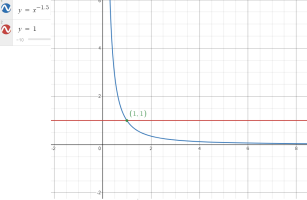Yes, I missed the other difference from what I expected, namely that you swapped cos and sin from their usual order. So what I meant to say was this:
\(\displaystyle x^{-3/2} = 1 \)
\(\displaystyle x^{-3/2} = \cos(2n\pi) + i \sin(2n\pi)\)
\(\displaystyle x = \left [\cos(2n\pi) + i \sin(2n\pi)\right]^{{-2/3}} \)
And that is equivalent to what you originally wrote. I was reading it as "cis", and should have typed it in myself rather than editing yours, which would have helped me say what I mean (and maybe catch that your error wasn't really an error).
But is there a reason you chose your unusual formulation?? Was it a trap for people like me? Or just a way to "complexify" the work in two ways at once?

